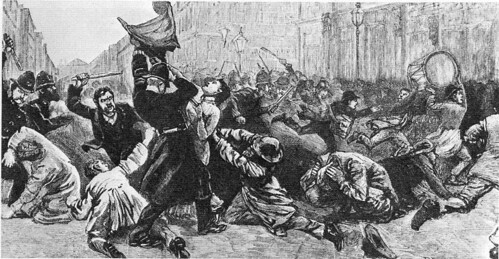Balochistan is conquered by the British Empire.
Balochistan is a region located in South Asia, encompassing parts of southwestern Pakistan, southeastern Iran, and a smaller portion in southwestern Afghanistan. It is one of the most sparsely populated regions in the world and is known for its arid and rugged terrain, including deserts, mountains, and a coastline along the Arabian Sea.
Geographic Extent: Balochistan is the largest province in Pakistan in terms of land area, covering approximately 44% of the country’s total landmass. It is also divided into two parts: Balochistan in Pakistan and Sistan and Baluchestan in Iran. The Afghan portion is often referred to as “Nimruz, Helmand, and Kandahar” in Afghanistan.
Ethnicity: The region is home to various ethnic groups, with the Baloch people being the largest ethnic community. The Baloch are primarily Sunni Muslims and have their own distinct language, Balochi. Other ethnic groups in the region include Pashtuns, Brahuis, and Sindhis.
Political Issues: Balochistan has been the center of political and ethnic strife for many decades. There have been long-standing grievances among the Baloch people, including claims of economic marginalization and human rights abuses. Some Baloch nationalist groups have been involved in armed conflicts with both the Pakistani and Iranian governments, seeking greater autonomy or independence.
Economy: The economy of Balochistan is predominantly based on agriculture and natural resources. The region is rich in mineral resources, including natural gas, coal, and minerals such as chromite and copper. The Gwadar Port, located on the Arabian Sea coast in Pakistan’s Balochistan, is a strategic deep-sea port that has gained international significance due to its potential as a key trade route.
Security Concerns: Balochistan has faced security challenges due to insurgent movements and military operations. Pakistan has deployed security forces to address these challenges, leading to concerns about human rights violations and unrest in the region.
Gwadar Port: Gwadar Port is one of the most significant developments in Balochistan. It is operated by China Overseas Port Holding Company (COPHC) and is part of the China-Pakistan Economic Corridor (CPEC). The port aims to connect China’s western regions to the Arabian Sea, providing China with a shorter and more secure route for its trade.
Cultural Heritage: Balochistan has a rich cultural heritage with a history dating back centuries. The region has been influenced by various empires and dynasties, including the Persian, Mughal, and British empires. Balochi music, dance, and handicrafts are notable aspects of its cultural heritage.


